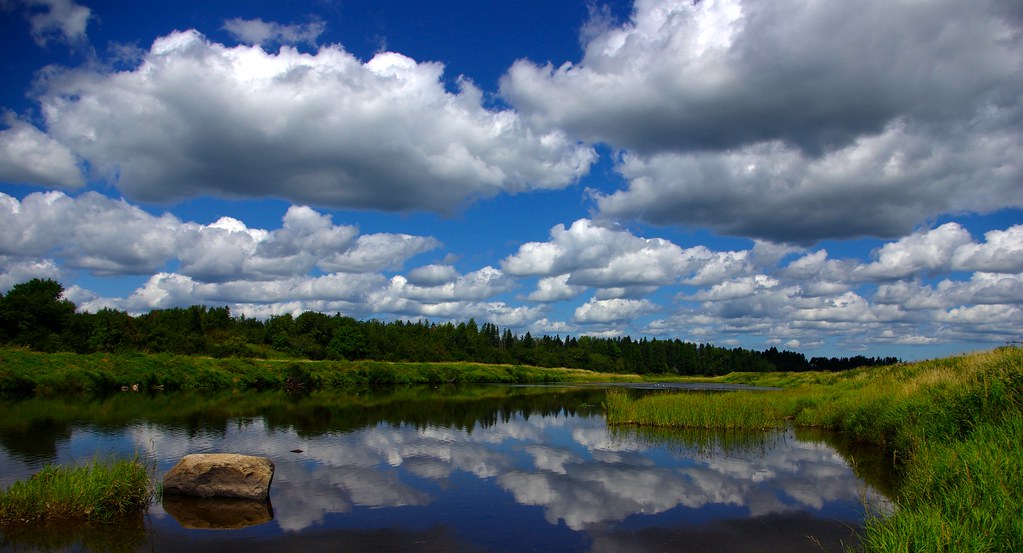
MONCTON – While driving towards Salisbury along the Riverview side of the Petitcodiac River I noticed some peculiar sign-age under the acronym LAPPA, imploring all who cared to read it to keep the causeway connecting Moncton with Riverview closed. Having become familiar with the plight of the river myself over the years, the sign struck me as odd. It was my understanding that the general consensus amongst concerned citizens was that the gates should be opened in an effort to restore the river. So, as with anything of particular interest to my life, I Googled it. Before we get to my findings, a little background information if you will.
The causeway was constructed as a means of connecting Moncton with the quickly expanding town of Riverview and, as is the case with many NB municipalities, foresight was a word not found in the City of Moncton’s dictionary. The causeway essentially pinched off the river, causing a massive buildup of silty sediment directly downstream. The river’s tidal bore, once world renowned and allegedly surf-able, was reduced to little more than the trickle of an 80 year man with kidney stones. As can be imagined the local ecosystem was affected and the fauna — fish in particular — that had once flourished soon vanished. A new ecosystem has since grown in its place, namely that of Lake Petitcodiac, a fresh water headpond that amasses upriver of the causeway.
Since its inception, there have been many who wished to see the gates of the causeway opened or completely obliterated in an effort to restore the river and its contributing watersheds to their former glory. One group in particular, the Petitcodiac Riverkeepers, have spent the last ten years lobbying for just that. The Riverkeepers have put forth many arguments for the causeway’s opening/removal, with their ace in the sleeve being a particular piece of legislation set out in the Canadian Fisheries Act that prohibits the blockage of fish in any given waterway. Backed by thousands of local citizens and members of the scientific community, the province eventually heard the call and in July of 2008 announced plans for the opening of the causeway gates in 2010.

Well folks, it’s 2010, and the gates are still closed. It turns out not everyone was happy with the province’s decision to open the gates. Que LAPPA, also known as the Lake Petitcodiac Preservation Association . The LAPPA is a self proclaimed “multi-stakeholder’s group who has an interest in enhancing and maintaining the 21km freshwater lake (headpond), and Petitcodiac River ecosystem”. The LAPPA advocates that it is in province’s best interest to keep the gates closed, citing potential river contamination due to leachate pollution from relic landfills and the current wastewater treatment facility that resides along the river. The group recently issued a 60-day warning to the provincial government informing the powers that be of their plan to pursue the issue as a legal matter should the province choose to move forward.
While LAPPA’s website lacks any sense of professional coherence, and many of their arguments border on the superficial and absurd, they do raise many important issues that should not go unnoticed; namely, the need for concrete ideas to deal with the pollution that is known to exist very near the river.

Whether or not the gates will be opened and the causeway removed is still anyone’s guess. What is apparent, however, is that both factions, the Riverkeepers and the LAPPA, have approached their respective stances with such zeal and vigor that each has managed to overlook some major obstacles in what I’m sure they believe to be the greater good.
The truth of the matter is that no one can say with certainty what the opening of the gates will mean for the river. It is quite possible that the tidal bore and fish stocks will not return, that the banks, despite efforts to contain them, will spill onto established riverfront infrastructure, and that millions of dollars (approximately $68 million) will have all been for naught. Only time will tell.
What is known however, is the speed with which Moncton and the surrounding area continues to grow and the fact that our current wastewater facility provides only primary treatment. Perhaps the proposed cost for river restoration would be better spent upgrading to a more economically friendly secondary or tertiary treatment facility whose effects are known, and whose benefits are tangible. Ideology and reality are easily blurred: the biologist in me says “go for it!” while the realist says “I’m not sold on this idea.”

photos by Blake Michel Morin
